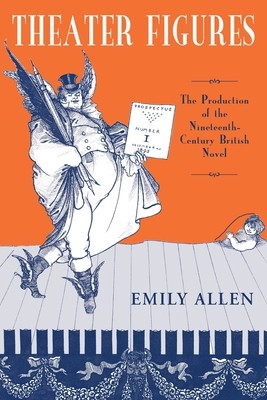
- We will send in 10–14 business days.
- Author: Emily Allen
- Publisher: Ohio State University Press
- ISBN-10: 0814251102
- ISBN-13: 9780814251102
- Format: 15 x 22.6 x 1.6 cm, softcover
- Language: English
- SAVE -10% with code: EXTRA
Reviews
Description
Why did nineteenth-century novels return, over again, to the scene of theater? Emily Allen argues that theater provided nineteenth-century novels, novelists, and critics with a generic figure that allowed them to position particular novels and novelistic genres within a complex literary field. Novel genres high and low, male and female, public and private, realistic and romantic, all came to identify themselves within a set of coordinates that included--if only for the purpose of exclusion--the spectacular figure of theater. This figure likewise provided a trope around and against which to construct images of readers and authors, images that most frequently worked to mediate between the supposedly private acts of reading and writing and the very public facts of the print market. In readings of novels by Burney, Austen, Scott, Dickens, Jewsbury, Flaubert, Braddon, and Moore, Allen shows how frequently theater appears as figure in novels of the nineteenth century, and how theater figures--actively and importantly--in what we have come to look back on as the history of the nineteenth-century novel. "Theater Figures thus offers a new model for thinking about how theater helped produce changes in the nineteenth-century literary market. While previous critics have considered theater as an enabling foil for the novel--either a constitutive opposite or constructive ally--Allen demonstrates how theater figures and tropes were used to negotiate competition among the novels and novelists eagerly seeking their share of the literary limelight.
EXTRA 10 % discount with code: EXTRA
The promotion ends in 19d.21:13:33
The discount code is valid when purchasing from 10 €. Discounts do not stack.
- Author: Emily Allen
- Publisher: Ohio State University Press
- ISBN-10: 0814251102
- ISBN-13: 9780814251102
- Format: 15 x 22.6 x 1.6 cm, softcover
- Language: English English
Why did nineteenth-century novels return, over again, to the scene of theater? Emily Allen argues that theater provided nineteenth-century novels, novelists, and critics with a generic figure that allowed them to position particular novels and novelistic genres within a complex literary field. Novel genres high and low, male and female, public and private, realistic and romantic, all came to identify themselves within a set of coordinates that included--if only for the purpose of exclusion--the spectacular figure of theater. This figure likewise provided a trope around and against which to construct images of readers and authors, images that most frequently worked to mediate between the supposedly private acts of reading and writing and the very public facts of the print market. In readings of novels by Burney, Austen, Scott, Dickens, Jewsbury, Flaubert, Braddon, and Moore, Allen shows how frequently theater appears as figure in novels of the nineteenth century, and how theater figures--actively and importantly--in what we have come to look back on as the history of the nineteenth-century novel. "Theater Figures thus offers a new model for thinking about how theater helped produce changes in the nineteenth-century literary market. While previous critics have considered theater as an enabling foil for the novel--either a constitutive opposite or constructive ally--Allen demonstrates how theater figures and tropes were used to negotiate competition among the novels and novelists eagerly seeking their share of the literary limelight.


Reviews